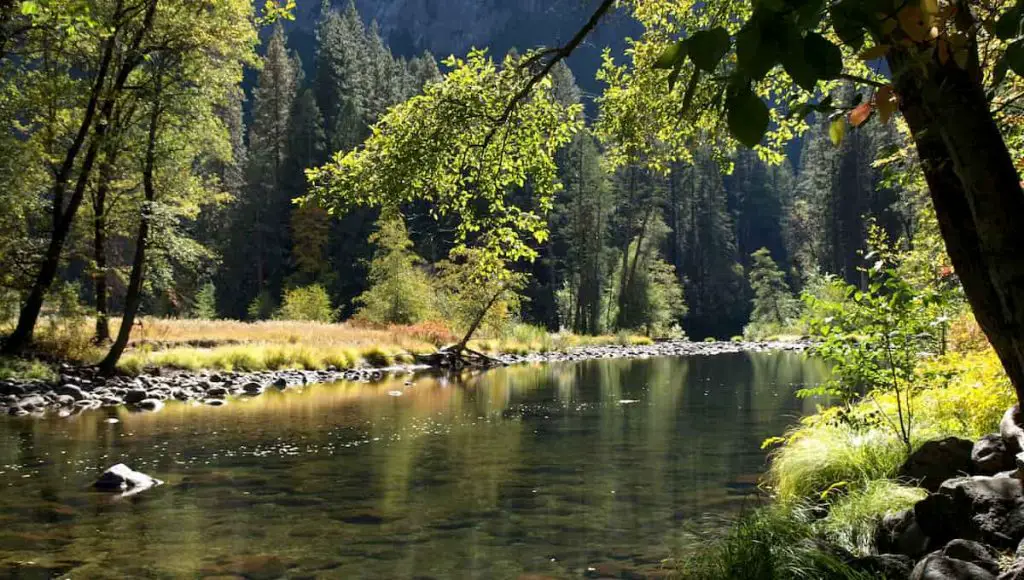How To Find Diamonds in Your Backyard

“Diamonds are forever” is a term that was coined in the late 18th century following their initial discovery in South Africa. Since then, the highly-sought-after gemstone adorns engagement rings and other jewelry. Learn how to find diamonds in your backyard to add to your stone collection or sell for a profit.
Since these glittering gemstones were uncovered from the earth in 1871 for the first time, the world over has attempted to dig up diamonds to amass small and large fortunes for large companies and individual prospectors alike.
The questions on everyone’s lips are “where are diamonds found?”, “how are they formed?”, and “how to find diamonds in real life near me?” This article answers those questions while providing fascinating information about these carbon-formed gemstones.
The History of Diamonds (How Old Are The Oldest Diamonds?)
To sum things up in a nutshell, the oldest diamonds are pretty ancient. The oldest-known gems date back between one to 3.5 billion years. However, some may argue that stashes of the ancient stones are actually closer to 4.5 billion years old.
Yet despite their long-standing occupancy in the earth, they were only discovered by humans much, much later. One of the reasons for this is that the mineral is buried deep underground and can require intensive excavation.
Another is that the nondescript appearance of unpolished and uncut diamonds means they’re commonly mistaken for glass or quartz.
How Is A Diamond Formed?
Interestingly, diamonds are formed out of carbon, which is a chemical element found in the earth. How long does it take to make a diamond? Scientists aren’t sure – one thing we do know is that diamonds have sat in the ground for approximately 3.3 billion years, which is nearly as old as the earth itself.
Diamonds were created when said carbon was exposed to extreme heat and pressure, hundreds of kilometers beneath the earth’s surface.
Due to the intense pressure that carbon was exposed to, which is something like 50 000 more than the atmosphere, carbon atoms bonded together tightly to create diamond crystals. Due to this pressure and the strong bonding of the particles, diamonds are one of the earth’s hardest minerals, making them virtually indestructible.
The mineral group of diamonds is entirely unique because of its chemical composition.
What Types of Soil are Diamonds Found in?
If diamonds are formed deep within the earth’s mantle, how is it possible to find a diamond in the ground?
During the time diamonds were forming, magma, which is the earth’s molten rocks were also developing under the same extreme conditions. The rapid expansion of the magma made volcanic eruptions and disturbances of the earth inevitable.
These explosions would cause the molten liquid to travel to the earth’s surface. The magma moved with such speed and velocity, creating a tunnel to reach the surface while sweeping up rocks, diamonds, and debris along the way.
Over time, molten hardened and settled in vertical pipes. These pipes or vertical formation of igneous rocks called Kimberlite held diamonds en mass waiting to be discovered.
Where Diamonds Can Be Found
While diamonds are found inside rocks, diamonds aren’t rocks but a chain of crystallized carbon atoms.
Today, universal advice about where diamonds are found is: look near ancient volcanic sites and in areas where kimberlite pipes have been unearthed, which are found worldwide.
Where Else are Diamonds Found in Nature?
If you’re casually looking for diamonds in your area and aren’t a traveling stone prospector, it might not be possible to visit popular excavation points that are found scattered across the globe.
Typically, diamond mining has lead people to search for kimberlite pipes. However, diamonds are also commonly found washed up in river beds and bodies of water where eroded volcanic rock has been carried by rivers, streams, and even glaciers miles from volcanoes over the years.
Have you ever seen people panning by rivers or individuals scanning the beachfront with metal detectors? They could be searching and possibly finding diamonds on the beach and other areas.
Widespread Methods Of Finding Diamonds In The Ground

You may be wondering, “can I mine my own diamonds?”
In America, commercial diamond mining is declining, although diamond explorers popularly visit Canada because the ground is embedded with kimberlite.
However, that doesn’t mean that diamond exploration in our country has grounded to a holt amongst individuals.
Whether you’re a hobbyist or have dedicated your life to expanding your collection, you would typically employ the below methods.
Alluvial Mining
One of the most common methods for uncovering diamond deposits is alluvial mining, which is used commercially and for personal discoveries of the shiny gem.
Alluvial mining is extracting gold, diamonds, or other prized metals from river beds, and anyone can do it.
While diamond enthusiasts may spend thousands of dollars on advanced equipment to mine the precious stone, it can be a reasonably inexpensive hobby that the entire family can participate in.
In a post we did on finding gold in your backyard, we described the technique of panning. Thankfully the same skills are transferable for diamond hunting.
For treasure hunters out there that are interested in seeing what other wonders may be awaiting them in the backyard, our guide on finding arrowheads in your backyard will likely get you excited as well.
Here’s A Recap On How To Find Diamonds In Rivers:
You might be wondering if diamonds are found in dirt. The notion behind panning for diamonds found in dirt and riverbeds is that lighter debris floats while heavier objects, like gold or diamond, sink to the bottom of your pan. If panning is implemented correctly, you may strike it lucky.
- Fill a pan ¾ full of gravel near to a body of water and submerge it so that it is just below the surface.
- Swish the pan back-to-front and side-to-side but not too vigorously that the contents wash away.
- Swirl the contents of the muddy debris in a gentle, circular motion – this movement removes or dissolves clumps of dirt and clay.
- Repeat the process until all that is left are the heavier composites of the soil, like the metals, are settled at the bottom.
Product Picks
- 5-Piece Set of Patented Stackable Sifting Pans – suitable for beginners and fun for all!
How To Dig For And Track Diamonds Using A Metal Detector
How does a diamond detector work and can you find a diamond with a metal detector?
The answers to these commonly-asked and important questions will help you to become a more informed diamond hunter with realistic expectations.
It’s important to understand that metal detectors can’t track gemstones, but they do lead you to a plethora of mineral indictors. Therefore, diamonds don’t set off detectors, but the minerals in the surrounding soil might.
These minerals include chromium garnets, glassy green olivine, and magnetite, but to name a few. If your search isn’t limited to finding diamonds, it may be interesting to note that the above minerals could indicate the presence of both diamond and gold deposits. In other words, if you find a stash of diamonds, gold may also be nearby.
Apart from stumbling across a sparkling diamond, you may also find garnets, which are also valuable in their own right – these come in varying shades of green, yellow, orange, and red.
If you decide to find diamonds using this approach, you should know that you are more than likely to find diamond rings and lost jewelry than diamonds extracted from the earth.
How Do You Mine for Diamonds Using a Metal Detector?
Metal detectors are fun to use and keep you busy for hours-on-end, even if you don’t find anything valuable, such as diamonds. However, you must learn how to use your device to ensure that your hunts are more productive, which involves purchasing the right detector for the job.
- The Types Of Detectors
Very Low-Frequency Detectors work by emitting and receiving signals. The transmitter of the device sends electromagnetic signals toward the ground, and if there is metal in the soil, a signal is sent back upwards.
On the other hand, the Pulse Induction Metal Detector uses magnetic pulses instead of signals to track metal. If there’s metal around, the downward vibration transmitted by the machine is met by an upward pulse from the ore.
Consult with a product specialist to determine which type of detector works best to find diamonds in the ground.
- Learn To Sweep
Sweeping refers to how the device is moved across the ground. The trick to sweeping is to keep the machine low while moving forward over the surface slowly. If you’re looking for places where you can dig for diamonds, your backyard is an excellent place to start.
If you don’t unearth anything valuable, and least you’ve practiced your metal detection skills.
- Test Different Objects
Before sweeping public areas for a diamond, bury metal objects in your garden and see whether your device can track them.
- Be Methodical And Seek Mineral Indicators
While a diamond could pop out of the soil, the chances aren’t all that high. Therefore, if you’re frantically searching for diamonds, you should visit sites where diamonds have been excavated before and be on the lookout for the mineral indicators that we mentioned earlier.
Product Picks
- Adjustable And Water-proof Metal Detector – suitable for all ages, for hobbyists or professionals!
Realistically Speaking, Where Are You Most Likely to Find Diamonds?
Diamonds are found throughout the United States of America. Saying that, as we’ve mentioned before, commercial diamond cultivation in our country is facing a rapid decline.
So what states can you dig for diamonds to unearth buried treasures?
1841 sparked the California gold rush, where prospectors rushed to the state in the hopes of making fortunes. What wasn’t realized during this frenzy is that finite diamonds were present in the soil but often overlooked and dubbed valueless.
While you are more likely to have better luck locating diamonds in Canada or further afield, there is still the possibility, however slight, of finding diamonds in the state of California.
These days, former mines now allow visitors to hunt for diamonds. For example, the Crater Of Diamonds State Park in Arkansas will grant you a one-of-a-kind experience that will enable visitors to search the 37-plowed acre for a nominal fee. When it comes to how diamonds are found, the rule finders-keepers applies here. Whatever you find – rocks, minerals, and gemstones you can take home with you.
How Do You Know If You Found A Diamond?
Finding real diamonds is often attributed to sheer luck; a recent story of a 14-year-old boy finding brown diamonds at The Crater Of Diamonds State Park worth 15 thousand dollars is a testament to this.
However, it would help if you also had a keen eye because rough, uncut diamonds don’t look at all similar to the polished gems that are advertised. If you aren’t sure if you’ve found diamonds, there are several diamond tests you can utilize.
Real Diamonds Shimmer
Do real diamonds sparkle in the dark? While real diamonds don’t sparkle in the dark (they need light for that to happen), they do emit a brilliant shine under the right circumstances.
Place the rock against other shiny rocks, if yours outshines the other, then congratulations – you’ve uncovered a glittering diamond!
Rough Diamonds Are Transparent But Not Entirely Translucent
Can you see all the way through a real diamond? If the object is transparent, then you’ve accidentally picked up glass instead or may have purchased a fake.
Diamond Strength
How strong is a diamond? It comprises hard and durable components where only another diamond can cut through it and leave marks.
Can real diamonds cut through glass, though? Yes, although any number of substances can stronger than glass can cut through glass. So don’t use its toughness as the primary indicator because you may not necessarily have found glass, but something that looks similar, like quartz, for example.
Repels Water
Drip water over the stone; if it runs off the surface, then you could have a real diamond on your hands.
Rounded Edges
Does the stone you found resemble a jellybean shape-wise? Rough diamonds have rounded edges, indented with tiny triangles.
If what you’ve found has jagged borders, it’s probably not a diamond.
How Can You Tell If a Diamond is Real or Fake?
If your gemstone hunting has proved successful, on top of determining whether or not you’ve found a real diamond, you need to verify its authenticity before you try to sell it off to a prospective buyer.
So what are fake diamonds called? Fake diamonds, which are called faux diamonds, may resemble real diamonds, but they aren’t nearly as valuable. Find out if you’ve uncovered a fake by administering these home tests.
The Scratch Test
We can’t stress the strength of a diamond enough as being one of the most durable substances on earth. So why are diamonds so strong? The reason is that they’re made from carbon atoms that are tightly bound together.
If it cuts through glass, it could be a diamond. However, as we mentioned before, several other gemstones have this effect on glass.
It’s common knowledge that only diamonds can leave marks on diamonds. If your diamond ring is covered in scratches, there’s a high chance that it’s not real.
The Fog Test
Fog up the diamond with your breath – fog that quickly clears points to a real gem while a fake will stay misted awhile.
The Floating Test
Due to their high density, real diamonds will sink to the bottom of a cup full of water while a diamond that’s fake floats on top of the surface.
To note: synthetic, man-made diamonds are on the rise, which differs from fake diamonds because the properties that make up these are identical to the ones found in nature. Therefore, diamonds whipped up in a laboratory are claimed to be as priceless and valuable as diamonds created out of natural elements.
While the resemblance is uncanny to the naked eye, a skilled jeweler may spot the small differences using specialized equipment.
Product Picks
- PDMT-A Diamond Mate Electronic Tester A – determines whether your diamonds are real or fake, doing the work of a skilled jeweler.
Are All Diamonds Highly Valuable?
If you’re wondering how much diamonds are worth, it’s important to note that not all diamonds possess the same value.
Diamonds are judged according to the 4 C’s, which are:
- Cut: the geometric proportions and how the diamond has been cut.
- Clarity: how flawed is the diamond? There’s a scale ranging from flawless to slightly included.
- Color: refers to the various shades of a transparent diamond. Icy white, for example, is the most expensive diamond color there is.
- Carat: the weight or density of the diamond. 1 carat = 200 milligrams.
In some cases, when diamonds don’t rate highly according to the above, they’re used to make industrial tools and equipment.
Recap: A Definitive Guide for Diamond Excavation
In this article, we’ve looked at how you can find diamonds in your backyard, area, or state. Despite diamond production decreasing in America and there being slim pickings of the unique rocks, it’s still possible to unearth the precious gem in the soil. This article aimed to:
- Give a brief overview of the fascinating creation of diamonds.
- Offer facts on diamonds, including how deep diamonds are in the ground, as well as the kinds of rocks that diamonds are found in — answer: encased in an igneous rock called kimberlite.
- Discuss where diamonds are mined from, which include sites of volcanic eruptions, riverbeds and old, disused mines, and the best areas where you can dig for diamonds.
- Highlight the properties of real diamonds and the tests that can be used to identify whether a diamond is real, fake, or another gemstone entirely.
- Provide the standard techniques of diamond hunting and recommended specialized equipment that can make your search for these gems more productive and fruitful.







